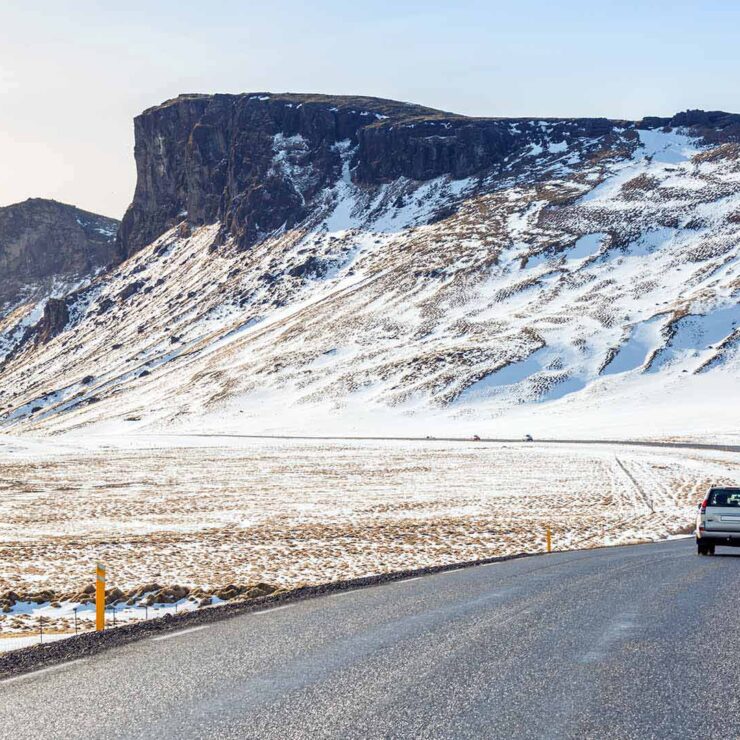Iceland, often called the “Land of Fire and Ice,” is a dream destination for adventurers and nature lovers alike. With its dramatic landscapes, including towering waterfalls, active volcanoes, black sand beaches, and the mesmerizing Northern Lights, this Nordic island nation offers unparalleled beauty. However, Iceland’s raw, untamed environment and unpredictable weather can pose significant challenges, even to seasoned travelers. Ensuring your safety while exploring this stunning country is paramount to enjoying a memorable and worry-free trip. In this comprehensive guide, we’ll cover essential safety tips for traveling Iceland, tailored for tourists seeking a secure and enjoyable experience. Packed with SEO-friendly keywords like “Iceland travel safety,” “safe travel in Iceland,” and “Iceland tourist tips,” this post is your ultimate resource for navigating the country’s unique hazards while maximizing your adventure.
1. Prepare for Iceland’s Unpredictable Weather
Iceland’s weather is notoriously fickle, often changing multiple times within a single day, regardless of the season. A sunny morning can quickly turn into a blizzard or torrential rain, with strong winds reaching speeds of 60-100 km/h (37-62 mph) during storms. To stay safe, always check the daily forecast on the Icelandic Meteorological Office website (en.vedur.is) or use apps like Veður for real-time updates, especially before heading out on hikes or drives. Pack layered clothing, including waterproof and windproof jackets, thermal base layers, hats, gloves, and sturdy boots, even in summer. Locals often say, “If you don’t like the weather, wait five minutes,” so be prepared for sudden shifts when planning outdoor activities like exploring the Golden Circle or Reynisfjara Beach.
Safety Tip: Never ignore weather warnings or road closures issued by authorities—search “Iceland weather safety” for updated alert systems.
2. Drive with Caution on Icelandic Roads
Driving in Iceland offers incredible freedom to explore remote areas, but the country’s roads can be hazardous, especially for those unfamiliar with local conditions. Many roads, including parts of the Ring Road (Route 1), are narrow, winding, and sometimes unpaved (gravel F-roads require 4×4 vehicles). Winter brings icy conditions, reduced visibility due to snowstorms, and limited daylight (as little as 4-5 hours in December). Always check road conditions on SafeTravel.is or the Road Administration site (vegagerdin.is) before setting out. Rent a vehicle suited to your itinerary, adhere to speed limits (often 90 km/h on highways, lower in rural areas), and never stop on road shoulders for photos—it’s illegal and dangerous due to blind spots. Sheep and reindeer often wander onto roads, so stay alert.
Driving Tip: Search “Iceland driving safety tips” for videos on handling gravel roads or one-lane bridges, common outside Reykjavik.
3. Respect Nature’s Power at Natural Attractions
Iceland’s natural wonders are breathtaking but can be deadly if not approached with caution. At Reynisfjara Beach on the South Coast, powerful sneaker waves have swept tourists into the freezing Atlantic Ocean—always stay well back from the water’s edge and heed warning signs. Waterfalls like Gullfoss or Skógafoss can have slippery paths and strong winds; stick to marked trails and avoid climbing over barriers for better photos. Geothermal areas, such as those near Geysir, have boiling mud pools and scalding water—never step off designated paths, as the ground can be unstable. Always prioritize safety over selfies when visiting “Iceland natural attractions.”
Warning Tip: Look up “Iceland tourist accidents” to read real stories and understand the risks at popular sites.
4. Be Cautious Around Glaciers and Ice Caves
Glacier hikes and ice cave tours, often near Vatnajökull National Park, are bucket-list experiences, but they come with serious risks. Crevasses, unstable ice, and sudden collapses make these environments dangerous without proper guidance. Never venture onto a glacier or into an ice cave without a certified guide—book tours through reputable operators who provide safety gear like crampons and helmets. Even with a guide, listen to instructions and avoid wandering off. Winter tours are particularly risky due to harsher conditions, so check reviews and safety records when searching for “Iceland glacier tour safety.”
Preparation Tip: Wear appropriate gear (provided by most tours) and inform someone of your plans if joining a guided excursion.
5. Stay Safe While Hiking
Hiking in Iceland offers stunning views, from the rolling hills of Landmannalaugar to the rugged trails of Þórsmörk, but the terrain and isolation require preparation. Always inform someone of your hiking plans, including your route and expected return time, or register with SafeTravel.is for emergency tracking. Carry a fully charged phone, a portable charger, a map, and a GPS device, as cell service is spotty in remote areas. Pack enough food, water, and emergency supplies like a first-aid kit and thermal blanket. Stick to marked trails, as shortcuts can lead to dangerous terrain or protected areas. If weather worsens, turn back—rescue operations in Iceland can take hours due to the vast wilderness.
Emergency Tip: Save the Icelandic emergency number, 112, on your phone, and download the 112 Iceland app for quick location sharing if needed.
6. Understand the Risks of Geothermal Hot Springs
Soaking in Iceland’s geothermal hot springs, like the Blue Lagoon or Secret Lagoon, is a must-do, but safety is key. Always test the water temperature before entering, especially at natural, unregulated hot springs like Reykjadalur, as some pools can exceed 40°C (104°F) and cause burns. Avoid submerging your head to prevent infections from bacteria that thrive in warm water. At public pools, follow posted rules and shower before entering (a cultural norm in Iceland). Never consume alcohol while soaking, as it increases the risk of dehydration or accidents. Search “Iceland hot spring safety” for lists of safe, accessible pools.
Health Tip: Stay hydrated by drinking water after soaking, as hot springs can cause dehydration.
7. Prepare for Limited Daylight in Winter
If visiting Iceland between November and February, be aware of the extremely short daylight hours—sometimes as little as 4 hours per day. This can affect driving, hiking, and sightseeing, increasing the risk of getting lost or stranded in darkness. Plan activities during daylight, carry a headlamp or flashlight with extra batteries, and wear reflective gear if walking near roads at night. For Northern Lights viewing, a popular winter activity, stick to guided tours or well-known viewing spots to avoid remote, unlit areas. Searching “Iceland winter travel safety” will provide tailored advice for coping with polar night conditions.
Scheduling Tip: Use sunrise/sunset calculators online to plan your daily itinerary around available light.
8. Avoid Alcohol-Related Risks
Icelanders enjoy a vibrant nightlife, especially in Reykjavik along Laugavegur Street, but overindulging in alcohol can lead to safety issues in a country with harsh weather and rugged terrain. Alcohol is expensive (a beer can cost $10-15), and drinking before driving or outdoor activities like hiking or swimming in hot springs heightens accident risks. If you partake, do so in moderation, stay in groups, and ensure you have a safe way back to your accommodation. Public intoxication can also lead to fines or legal trouble. Look up “Reykjavik nightlife safety” for tips on enjoying the scene responsibly.
Social Tip: Use ride-sharing apps or taxis if you’ve been drinking—public transport may not run late at night.
9. Know How to Handle Emergencies
Iceland’s remote locations mean help can be far away during an emergency. Familiarize yourself with the national emergency number, 112, which connects you to police, ambulance, and search-and-rescue services. The 112 Iceland app allows you to send your GPS location to responders, crucial in areas without clear landmarks. Travel insurance with medical and evacuation coverage is highly recommended, as healthcare and rescue operations can be costly for tourists. Keep a small first-aid kit for minor injuries, and know the location of the nearest hospital or clinic—Landspítali University Hospital in Reykjavik is the main facility. Search “Iceland emergency services for tourists” for detailed guides on what to do if things go wrong.
Insurance Tip: Compare policies online to ensure coverage for adventure activities like glacier hiking or snowmobiling.
10. Respect Local Laws and Environmental Rules
Iceland prioritizes environmental protection and public safety through strict laws that tourists must follow. Off-road driving is illegal and heavily fined (upwards of $2,000), as it damages fragile ecosystems like moss-covered lava fields. Camping outside designated sites without landowner permission is also prohibited—stick to official campsites or book accommodations. Littering carries penalties, so always pack out your trash. Drones are restricted near airports, private property, and certain natural sites like waterfalls; check regulations on the Icelandic Transport Authority site. Respecting these rules ensures your safety and preserves Iceland’s beauty for future visitors. Search “Iceland travel laws” for a full list of dos and don’ts.
Cultural Tip: Ask locals for advice if unsure about rules—they’re often happy to help tourists avoid mistakes.
Practical Safety Tips for Iceland Travel
- Packing Essentials: Bring waterproof gear, warm layers, sturdy hiking boots, a reusable water bottle (tap water is safe and pure), and a power bank for electronics.
- Communication: Purchase a local SIM card from providers like Síminn or Vodafone for reliable data in populated areas, as Wi-Fi isn’t always available in rural spots.
- Budget Safety: Use credit cards with no foreign transaction fees, as Iceland is nearly cashless. Notify your bank of travel plans to avoid card blocks.
- Health Precautions: No specific vaccinations are required, but ensure routine shots are up to date. Bring sunscreen and sunglasses, as UV reflection off snow or water can be intense.
- Wildlife Awareness: Icelandic wildlife (like Arctic foxes or seabirds) is generally harmless, but keep a safe distance and don’t feed animals to avoid disrupting their behavior.
Final Thoughts on Safe Travel in Iceland
Traveling to Iceland is a once-in-a-lifetime experience, filled with awe-inspiring sights and thrilling adventures, but it demands respect for the country’s powerful natural forces and unique challenges. By preparing for volatile weather, driving cautiously, respecting safety guidelines at natural sites, and staying informed about local conditions, you can minimize risks and focus on creating unforgettable memories. Whether you’re chasing the Northern Lights, hiking volcanic trails, or soaking in a geothermal pool, these “Iceland travel safety tips” will help ensure your journey is as secure as it is spectacular. Start planning your safe Icelandic adventure today, and let this magical land captivate you without concern!




